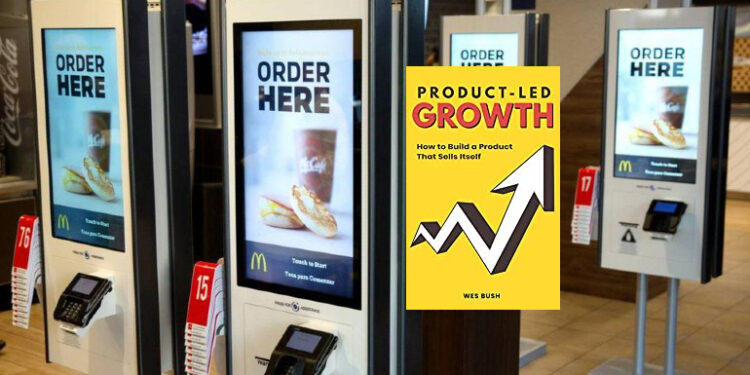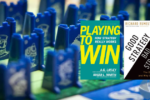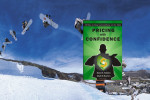Product-Led Growth

Product-led companies use their product to facilitate demand generation, qualification, sales, onboarding, activation, and engagement. By contrast, sales-led companies rely on people to undertake these activities. The ability to “try before you buy” is a key difference in these two approaches.
Product-Led Growth: How to build a product that sells itself by Wes Bush
Product management takeaways: As a product leader, you should understand your selling method and explore the options for product-led growth to gain scalability, focus, and customer acquisition cost benefits.
Product-Led Growth defines the product-led method and maps out the steps to implement the model. Bush provides a framework for deciding between freemium, free trial, and demo options. He also explains how to build a product-led foundation through understanding, communicating and building on your value. The final part of the book provides detailed metrics, product-led growth tactics, and processes to implement the method.
Bush describes product-led growth as minimizing the time-to-value for customers (i.e., let them experience the value we are promising them) and letting the product sell itself. This is done by eliminating the gap between the promised value and experienced value through creating a straight line from their current state to desired outcome.
Deciding to implement product-led growth methods doesn’t guarantee success nor is it a good fit for all products and companies. Bush’s framework helps you evaluate your fit and readiness for the model. The details in the book enable you to create a focused set of next steps to experiment with.
What is product-led growth?
Product-led growth is an end user-focused growth model that relies on the product itself as the primary driver of customer acquisition, conversion and expansion.
The term “product-led growth” was coined by OpenView partners to describe companies which rely on their product to fuel growth. Product-led companies use the product to perform acquisition, retention and upsell/cross-sell activities. Sales-led companies use people to perform these steps.
Today, a strong brand and social proof are no longer enough to build trust with the modern buyer. You need to let people try before they buy.
Most importantly, product-led and sales-led companies are based on very different business models. Each group within a product-led company will influence the product: sales, customer success, and marketing. The product is the path for lead generation, qualifying prospects, customer success, and quick time-to-value.
History tell us that ‘how’ you sell is just as important as ‘what’ you sell.
Benefits of product-led growth
Product-led companies tend to scale faster due to a wider top-of-funnel and global reach due to automated onboarding. Also, customer acquisition costs are lower due to faster sales cycles, higher revenue per employee and better user experience.
Sales-led versus product-led companies
Sales-led companies begin with a content strategy, capture inbound traffic with landing pages, nurture those leads with email, hand-off to sales, and then close the deal through a high-touch sales process. As Bush says, “a strong brand and social proof are no longer enough to build trust with the modern buyer.” This process ignores a fundamental reality of buying: experiencing the value of the product.
Trying a product is and always will be an essential part of the buying process.
Software is no different than any other type of product: there’s no substitute for using the product. Product-led companies organize around enabling their customers to try before they buy. Benefits of a product-led growth strategy include shorter sales cycles, lower customer acquisition costs, and higher revenue per employee.
Developing a product-led growth strategy
A product-led growth strategy is not easy to implement and carries a variety of risks. Bush has a three-step process for determining how to implement product-led growth and which sales model to use.
Choose between the free trial, freemium, or demo model
Bush uses his MOAT framework to determine which of these three models is the right one to use for your company:
- [M]arket Strategy: Is your go-to-market strategy dominant, disruptive, or differentiated? For dominant players, both freemium and free-trial are good options. For differentiated companies, free trials and demos work well. For Disruptive companies, freemium is the best choice.
- [O]cean Conditions: Are you in a red- or blue-ocean business? For companies in a blue ocean with a quick time-to-value, the product-led model works well. However, for companies with complex products, the sales-led strategy is required. For those in a red ocean, use the product-led model to grow quickly and profitably.
- [A]udience: Do you have a top-down or bottom-up marketing strategy? The freemium and free-trial models work best with bottom-up selling because the “try before you buy” value proposition works effectively with departmental and team buyers. Top-down selling usually leads to poor results because of the complex nature of executive-level selling.
- [T]ime-to-value: How fast can you showcase value? If you have motivated buyers, a product that is easy to use, and the core value of the product can be achieved without high touch assistance, a freemium or free-trial model can work well.
How to build a product-led growth model
Once you’ve evaluated your go-to-market strategy, business model, users, and market and have concluded that a product-led model is right for you, Bush provides his UCD framework to as a blueprint:
- [U]nderstand your value: identify the functional, emotional, or social outcome that your product provides. Back this up with a value metric that the customer can understand and is meaningful to them.
- [C]ommunicate the perceived value of your product: this is critical because in a product-led business, the revenue model and customer acquisition model are tightly aligned.
- [D]eliver on what you promise: it’s important that the perceived value (what sales and marketing promise) and the experienced value (what is delivered in the product) align. A value gap between these two components can be the result of capability debt, a mis-understanding of why customers buy, or overpromising. If present, these gaps need to be addressed. In product-led companies, tactics such as freemium, free trial, and onboarding help narrow this gap. Similarly, understanding and reducing time to value is critical for product-led growth.
Bush discusses pitfalls of implementing the product-led model and zeroes in on the lack of ownership for the initiative as the most common issue faced by teams embarking on this path.
Guiding your customers to outcomes
Unlike a sales-led organization, in which the goal is to take people from Point A to Point B in a sales cycle, we want to take people from Point A to Point B in their lives.
By providing customers with a “try before you buy” option and letting them experience the value of your product, a product-led company can help their customers achieve their desired outcomes. The challenge is that most of the time, customers never make it to Point B. Using a bowling analogy, Bush suggests implementing “bumpers” that keep customers moving a straight line to the outcome. To decide where bumpers need to be placed, map out the path from the current state to the desired outcome, identify checkpoints and developing a straight journey.
Product Bumpers
Product Bumpers help increase adoption within the product. Examples of product bumpers are: welcome messages, product tours, progress bars, checklists, onboarding tooltips, and empty states.
Conversational Bumpers
Conversational bumpers help to educate users, invite them into the product, and upgrade them from free to premium. Typical conversational bumpers include: user onboarding emails, push notifications, explainer videos, and direct mail.
More about Product-Led Growth
How to shift to Product-Led Growth







